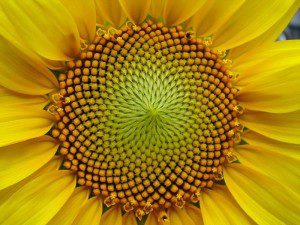By Alyssa Danigelis – news.discovery.com
There are only a few solar concentrator plants in the world, mainly because these multi-mirrored solar power production facilities require giant chunks of land and hefty investments. A new design developed at MIT could make these plants more feasible.
Using sunflowers as their inspiration, MIT researchers, led by assistant professor of mechanical engineering Alexander Mitsos, came up with a biomimetic design — a design that mimics nature — that better arranges the mirrors.
In solar concentrator parlance, the devices that hold the mirrors are called heliostats. Normally, the heliostats are arranged in concentric circles — bull’s eye style — around a central tower. They reflect light from the sun toward the top of the tower, where there is a solar receiver. The receiver uses the intense heat to produce steam; the steam is used to turn a turbine that drives a generator, producing electricity.
[pro_ad_display_adzone id=”110028″]
Now look closely at the florets in the center of the sunflower photo above and imagine a bunch of heliostats arranged in that pattern.
Mitsos and his colleagues recommend angling the heliostats at 137 degrees relative to each other in a parabolic pattern called the “Fermat spiral” after the 17th Century French mathematician Pierre de Fermat.
Last fall, I visited a remote part of the Arizona desert about an hour’s drive from Phoenix. Row upon row of photovoltaic panels lined the ground, all part of the Mesquite Solar complex that’s being constructed by Sempra Generation using locally manufactured Suntech panels. When it’s finished in 2013, the plant will be one of the largest solar facilities in the world.
At the time, I learned that one major advantage that stationary solar panels have over heliostats is that their modular nature makes it possible to start generating power immediately. You don’t have to wait for an entire plant to be finished first.
However, solar concentrators can generate a heck of a lot of power. The seemingly simple reconfiguration that the MIT-led team suggests would increase efficiency, while also reducing the amount of land needed for a facility by 15.8 percent, according to the researchers, who recently published their flower-like model in the journal Solar Energy.
“The new pattern achieves a better trade-off between land area usage and efficiency,” the researchers wrote in Solar Energy. “It can reduce the area requirement significantly for any desired efficiency.” That means a little flower power could go a long way.
[pro_ad_display_adzone id=”110027″]







